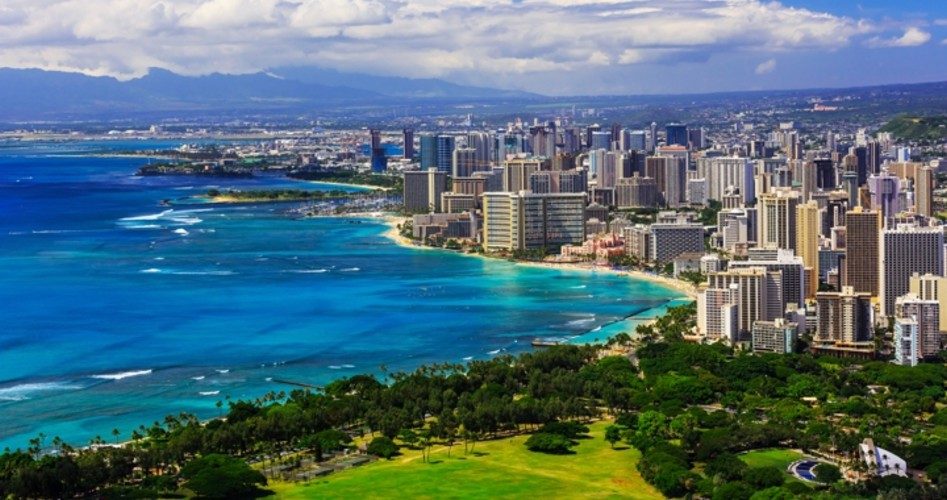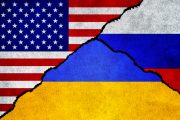
The news media in Hawaii, including the Honolulu Star Advertiser, reported on July 20 that the state is formulating a preparedness plan for what the paper describes as “the unlikely event that North Korea launches an intercontinental ballistic missile at the Aloha State.”
The report in the Star Advertiser accurately reflected the views of many military experts, including South Korea’s National Intelligence Service (NIS) concerning the realistic likelihood of North Korea posing a threat to Hawaii in the foreseeable future. As we reported on July 12, the NIS has disputed North Korean claims that the long-range missile the Pyongyang regime tested on July 4 has re-entry capabilities, which would allow it to direct a nuclear warhead to a specific target.
“The NIS sees North Korea as not yet capable of re-entry technology,” Lee Wan-young, a member of South Korea’s member of the National Assembly, said during a July 11 news conference.
While the July 4 test indicated that North Korea was close to developing a missile with long-range (ICBM) capability, it has yet to overcome significant hurdles against using such a missile against a remote target. First, it has yet to develop a nuclear warhead small enough to be carried by a missile. Secondly, it has not developed re-entry capabilities — the ability to bring a warhead back through the atmosphere without burning up. Finally, there is no evidence that should North Korea develop an ICBM, it would have the precision needed to accurately strike a target more than 4,000 miles away. (Hawaii’s islands of Niihau and Kauai are the farthest west, and are about 4,400 miles from the Korean Peninsula.)
Vern Miyagi, the Hawaii Emergency Management Agency’s administrator, said in a release: “We do not want to cause any undue stress for the public; however, we have a responsibility to plan for all hazards. We don’t know the exact capabilities or intentions of the North Korean government, but there is clear evidence that it is trying to develop ballistic missiles that could conceivably one day reach our state. Therefore, we cannot wait to begin our public information campaign to ensure that Hawaii residents will know what to do if such an event occurs.”
While Miyagi’s statement was not at all alarmist and admitted that any threat was remote by referring to “ballistic missiles that could conceivably one day reach our state,” the Star Advertiser reported that Hawaii’s tourism industry is “not at all happy with the arrival of the campaign, which it fears could spook tourists.”
“Everyone’s safety in Hawaii is always our top priority. We support the efforts of the Hawaii Emergency Management Agency to prepare for any threat to Hawaii’s well-being, be it man-made or a natural disaster,” the paper said, quoting Charlene Chan, director of communications for the Hawaii Tourism Authority. “However,” continued Chan, “we also know from speaking to our tourism industry partners that if reports are misinterpreted about the state’s need to prepare for an attack, this could lead to travelers and groups staying away from Hawaii. The effect of such a downturn would ultimately be felt by residents who rely on tourism’s success for their livelihood.”
Chan correctly added that the threat of a North Korean missile attack on Hawaii “is a very remote possibility at this time.”
Though just making the news now, the Hawaii Emergency Management Agency posted its information statement, “What to do in case of Nuclear Attack,” on its website on April 27. The headline is scarier than the actual content, however. The statement begins: “State Emergency Management officials say the threat of North Korea actually firing a nuclear missile at Hawaii is extremely small.” The statement continued by saying, “But yet with the unpredictable leadership of North Korea, Hawaii needs to take steps to prepare just in case.”
The article contained a link to an NBC News article run with the headline, “What Should You Do in Case of Nuclear Attack? ‘Don’t Run. Get Inside.’”
While preparing for any disaster — natural or manmade — is always a good thing, care must also be taken to ensure that the threats of a nuclear attack are realistic and not the product of typical communist propaganda. The old Soviet Union possessed an enormous arsenal, with some estimates putting their number of nuclear warheads at 40,000 and as many as 2,500 missiles capable of carrying them. (The U.S. arsenal was of comparable size.)
Despite these large nuclear arsenals, what has been called “the arms race” during the Cold War that lasted from the late 1940s until the collapse of the Soviet Union in 1991 presented more of a theoretical than an actual threat of nuclear war. Leaders on both sides were well aware that actually launching nuclear-topped ICBMs would trigger a chain of events leading to the destruction of both nations.
The biggest danger created by the arms race was not the danger of nuclear annihilation, but the fear factor that might cause Americans to submit the U.S. nuclear arsenal to the control of the UN. On September 25, 1961, President John F. Kennedy unveiled a plan at the UN to do exactly that. It was subsequently printed as State Department Publication 7277, entitled Freedom From War: The United States Program for General and Complete Disarmament in a Peaceful World. (A copy of the booklet is available from The New American. Click here.)
While not even North Korea’s propaganda machine can pretend that its arsenal in any way approaches that of the old Soviet Union, the story coming out of Hawaii and other parts of the western United States indicates that Americans are already becoming fearful because of Pyongyang’s tests. That is probably the Kim regime’s intent.
President Franklin Roosevelt once proclaimed, “The only thing we have to fear is fear itself.”
In the case of North Korea, we might paraphrase that statement by saying, “The only thing we have to fear is that an unrealistic fear of North Korean weapons will lead our government to make some major foreign policy mistakes.”
Developing an effective anti-missile defense system against North Korean or other missile attacks makes sense. But engaging in saber rattling by sending large fleets to the coast of the Korean Peninsula and stationing a large number of U.S. troops in South Korea is dangerous interventionism that is likely to get us embroiled in a second Korean War.
Image: Honolulu
Related articles:
In Test That Will Send Message to N. Korea, U.S. Successfully Intercepts ICBM
Successful Test of THAAD Anti-missile System Offers Hope for U.S. Defense
South Korea Says North Korean ICBM Lacks Re-entry Capability
Aircraft Carriers Gather Off N. Korea; Pyongyang Tests Missile Able to Hit Ships

